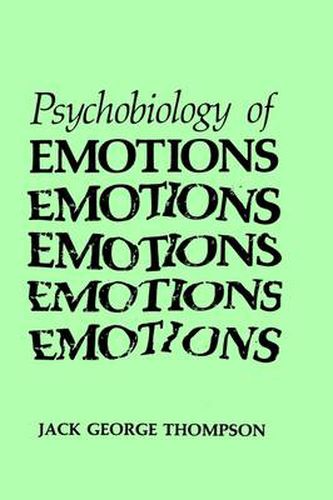Readings Newsletter
Become a Readings Member to make your shopping experience even easier.
Sign in or sign up for free!
You’re not far away from qualifying for FREE standard shipping within Australia
You’ve qualified for FREE standard shipping within Australia
The cart is loading…






This title is printed to order. This book may have been self-published. If so, we cannot guarantee the quality of the content. In the main most books will have gone through the editing process however some may not. We therefore suggest that you be aware of this before ordering this book. If in doubt check either the author or publisher’s details as we are unable to accept any returns unless they are faulty. Please contact us if you have any questions.
Regardless of culture, most adult humans report experiencing similar feelings such as anger, fear, humor, and joy. Such subjective emotional states, however, are not universal. Members of some cultures deny experiencing specific emo tions such as fear or grief. Moreover, within any culture, individuals differ widely in their self-reports of both the variety and intensity of their emotions. Some people report a vivid tapestry of positive and negative emotional experi ences. Other people report that a single emotion such as depression or fear totally dominates their existences. Still others report flat and barren emotional lives. Over the past 100 years, scientists have proposed numerous rival explana tions of why such large individual differences in emotions occur. Various authors have offered anthropological, biochemical, ethological, neurological, psycholog ical, and sociological models of human emotions. Indeed, the sheer number of competing theories precludes a comprehensive review in a single volume. Ac cordingly, only a representative sample of models are discussed in this book, and many equally important theories have been omitted. These omissions were not intended to prejudice the reader in favor of any particular conceptual frame work. Rather, this selective coverage was intended to focus attention upon the empirical findings that contemporary theories attempt to explain.
$9.00 standard shipping within Australia
FREE standard shipping within Australia for orders over $100.00
Express & International shipping calculated at checkout
This title is printed to order. This book may have been self-published. If so, we cannot guarantee the quality of the content. In the main most books will have gone through the editing process however some may not. We therefore suggest that you be aware of this before ordering this book. If in doubt check either the author or publisher’s details as we are unable to accept any returns unless they are faulty. Please contact us if you have any questions.
Regardless of culture, most adult humans report experiencing similar feelings such as anger, fear, humor, and joy. Such subjective emotional states, however, are not universal. Members of some cultures deny experiencing specific emo tions such as fear or grief. Moreover, within any culture, individuals differ widely in their self-reports of both the variety and intensity of their emotions. Some people report a vivid tapestry of positive and negative emotional experi ences. Other people report that a single emotion such as depression or fear totally dominates their existences. Still others report flat and barren emotional lives. Over the past 100 years, scientists have proposed numerous rival explana tions of why such large individual differences in emotions occur. Various authors have offered anthropological, biochemical, ethological, neurological, psycholog ical, and sociological models of human emotions. Indeed, the sheer number of competing theories precludes a comprehensive review in a single volume. Ac cordingly, only a representative sample of models are discussed in this book, and many equally important theories have been omitted. These omissions were not intended to prejudice the reader in favor of any particular conceptual frame work. Rather, this selective coverage was intended to focus attention upon the empirical findings that contemporary theories attempt to explain.